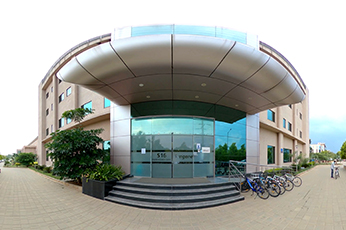The in vivo pharmacology division of Syngene offers validated pharmacodynamic and disease models, customized animal models, and comprehensive preclinical toxicology services. We have scientific and technical expertise in various diseases such as inflammation, metabolic disorders, Oncology/Immuno-oncology, central nervous system disorders, pain, and cardiovascular and renal disease. All our efficacy models are appropriately supported by ex vivo assays, histopathology services, biomarker, PK-PD studies, and imaging. Our 67,000 sq. ft. state-of-the-art animal laboratory facility is AAALAC-accredited, and GLP-certified.
For a complete list of validated models click here
Models according to therapeutic area
The incidence of metabolic syndrome is increasing and is a combination of several factors, including glucose intolerance, central obesity, dyslipidemia, and hypertension. Syngene offers a wide range of preclinical models for metabolic disorders. We also provide comprehensive information about the efficacy of test compounds.
Diabetes and obesity
- Type I
- Streptozotocin (STZ) induced type I diabetes in rats
- Type II
- Genetic models
- db/db and ob/ob mice
- Zucker fa/fa and ZDF rats
- Nutritional models
- High-fat diet (HFD) induced obesity in mice
- nSTZ + HFD induced model in mice
- Genetic models
- Type I
Insulin sensitivity models
- Insulin tolerance test (ITT)
- Oral glucose tolerance test (OGTT)
- Intraperitoneal glucose tolerance test (IPGTT)
- Euglycemic-hyperinsulinemic clamp in rats
Diabetic complications
- Nephropathy, Cardiomyopathy, Neuropathy, and Retinopathy
- Delayed wound healing
Dyslipidemia and atherosclerosis
- ApoE KO mouse model
- LDL receptor KO mouse model
- Diet-induced dyslipidemia models
Non-alcoholic steatohepatitis
- MCD diet-induced NASH/NAFLD model in mice
- HFD Fructose induced NASH in mice
- nSTZ + HFD induced NASH in mice
We offer validated models of inflammatory conditions, including respiratory (LPS inflammation, pulmonary fibrosis), skin (IL-23 psoriasis, IMQ/TPA psoriasis), delayed type hypersensitivity, inflammatory bowel diseases (TNBS, DSS or Oxazolone induced colitis), and rheumatoid arthritis. We have well-characterized and validated models in each disease area and models that can be customized for efficacy studies.
Inflammation
- IL12 Induced IFN-γ model
- KLH-induced DTH model
- LPS-induced pulmonary and systemic inflammation models
- ConA-induced acute hepatitis
- Graft vs. host disease (GVHD models)
- Carrageenan/mBSA-induced paw edema
- L-arginine/Cerulein induced acute pancreatitis
IBD and gastrointestinal inflammation models
- Dextran sulphate sodium (DSS) induced colitis (Ulcerative colitis)
- Trinitrobenzene sulphonate (TNBS) induced colitis (Crohn’s disease)
- Oxazolone-induced colitis
- Thioglycollate-induced peritonitis
- Cecal ligation and puncture model (CLP)
Fibrosis
- Bleomycin-induced pulmonary fibrosis
- CCL4-induced liver fibrosis
- Bile duct ligation-induced liver fibrosis
- Kidney fibrosis — unilateral ureteral obstruction and folic acid model
- Laminectomy induced fibrosis
Autoimmune disorders
- Multiple sclerosis: Experimental autoimmune encephalomyelitis (EAE)
- Systemic lupus erythematosus: MRL-lpr/lpr mice
- Rheumatoid arthritis (CIA & AIA)
Dermatology
- IL-23 induced psoriasis
- Imiquimod-induced psoriasis
- TPA-induced epidermal hyperplasia
- Ovalbumin-induced atopic dermatitis
- Sebaceous gland hypertrophy model of acne
We offer a variety of validated models of psychiatric disorders, neurological disorders, and pain. Our in vivo animal/mouse models are supported by relevant behavioral readouts, ex-vivo analysis, and histopathology services. Behavioral studies are analyzed using automated software systems, ensuring reliability and reproducibility.
Neurological conditions
- Alzheimer’s disease (Transgenic/Screening models/Ageing models)
- Parkinson’s disease (Transgenic/MPTP/6-OHDA/Rotenone model)
- Amyotrophic lateral sclerosis (SOD1 G93A mice)
- Cognition
- CNS safety and neurotoxicity studies (Non-GLP)
Neuropsychiatric conditions
- Chronic stress and PTSD
- Depression and Anxiety
Behavioral models
- Open field assessment
- Elevated plus maze
- Social interaction and sociability
- Forced swimming test
- Tail suspension
- Morris water maze
- Novel object recognition test
- Rotarod test
- Aggression — resident intruder model
- Sensorimotor behavior tests: Inverted screen, balance beam, cylinder test, grid test
Nociceptive pain
- Acetic acid-induced writhing
- Formalin-induced tonic pain
- Acute thermal pain
- Tail flick model
- Cystitis models
Inflammatory and arthritic pain
- Carrageenan induced hyperalgesia
- CFA-induced inflammatory and arthritic pain
- Osteoarthritic pain
Neuropathic pain
- Partial sciatic nerve ligation (PSNL)
- Chronic constriction injury (CCI)
- Spinal nerve ligation (SNL)
Post-operative pain: Incision pain (Brennan)
Complex regional pain syndrome (CRPS – I)
- In vivo Oncology models allow screening of the test compounds in cancerous cell lines derived from humans and mice. Inducing tumour disease in vivo, either subcutaneous or orthotopic, or metastatic in mice, followed by administration of the test compounds, allow us to study the efficacy of the test compounds in mitigating the disease
- Subcutaneous models involve transplanting the cancerous cell lines at the subcutaneous space in mice’s flank region, allowing solid tumour development. In addition to studying the efficacy of the test compounds towards tumour growth inhibition, the PK and PD parameters of the test compounds in the tumour-bearing animals can also be screened (read more on ex vivo analysis here)
- Orthotopic models involve the transplantation of the cancer cell lines at the anatomically appropriate site of tissue, similar to their tissue of origin. It enables close simulation of the physiologically relevant microenvironment in the vicinity of the transplanted cancer cells, which encourages the development as well as the metastasis of the tumour
- Metastatic models involve the transplantation of the cancer cell lines intravenously, enabling the tumour’s dispersion and development all over the animal body, simulating a metastatic condition.
- These models help to achieve simultaneous screening of multiple parameters affecting the efficacy, such as dose regimens, dose frequency, and route of dosing for the therapeutic activity of test compounds, individually as well as in combination.
Depending on the origin of the cells, the model can be of
Hypertension
- DOCA-salt hypertension
- Spontaneously hypertensive rats (SHR)
5/6 nephrectomy (NTX) hypertension
Acute and chronic myocardial infarction and reperfusion
Isoprenaline-induced cardiopathy (acute myocardial infarction, cardiac hypertrophy)
FeCl3-induced arterial thrombosis
Limb ischemia in mice
Focal/global cerebral ischemia
Diabetic cardiomyopathy
Portal hypertension
Pulmonary hypertension
Cardiac hypertrophy
Nephrology
- Acute kidney injury model (Ischemia-Reperfusion & Glycerol-induced)
- Cisplatin/Adriamycin-induced nephritis
- LPS-induced acute kidney inflammation
- Unilateral ureteral obstruction model
- Folic acid-induced kidney fibrosis
- DOCA salt-induced CKD
- Adenine-induced chronic renal failure in rats
Osteoarthritis
- Medial meniscal tear (MMT)
- Anterior cruciate ligament transection (ACLT)
- ACLT + partial medial meniscectomy
- Spontaneous model in guinea pigs
Ocular models
- Rabbit ocular PK studies
- Dry eye and tear production studies
- Uveitis models (EAU and EIU)
- Lysolecithin-induced optic neuritis
Germ-free animal research
All efficacy models are supported by ex vivo assays, histopathology, biomarkers, PK-PD correlation, and imaging.
Ex vivo assays
- Cytokine analysis using ELISA, a multiplex platform with minimal sample volumes
- Biochemical assays for tissue biomarkers
- Gene and protein expression analysis in tissues
- Ex vivo cell proliferation and cytotoxicity assays
Histopathology
- Routine and special histochemical staining
- Automated Immunohistochemistry
- Software-assisted morphometric analysis
- Whole slide-scanning platform



